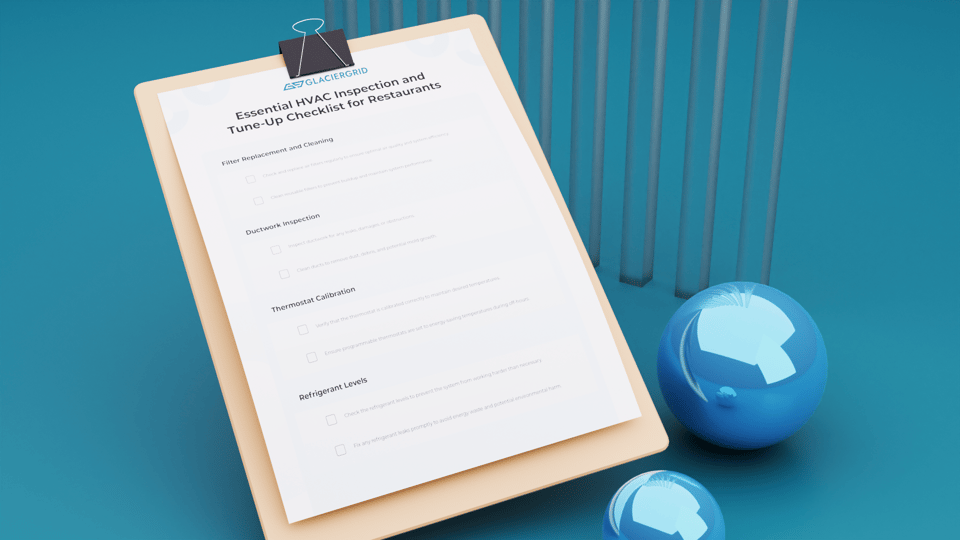Unlock Success in 2024: A Restaurant Owner's Guide to Achieving the Perfect HVAC Efficiency Strategy
.jpeg)
Is Your Restaurant Ready for Peak Season?
Discover the approach to optimizing restaurant operations with our adept energy management solutions. Seamlessly integrate automation within your establishments to efficiently reduce energy costs and foster better building management. Harness the power of modern technology to streamline operations, cut expenses, and usher your restaurant into a new era of efficiency and sustainability.
This ultimate guide will provide a deeper understanding of how energy management services can help you take charge of the peak season by promoting a greener and more cost-effective operational framework.
TLDR
Recap of Key Takeaways and Actionable Steps
- Understanding the Impact: Seasonal fluctuations are not mere calendar markers; they significantly influence restaurant operations. Recognizing this impact is the first step toward effective management.
- The Science Behind HVAC: Investing in cooling and ventilation isn't about installing a machine. It's about understanding airflow, temperature dynamics, and the pivotal role of HVAC systems in shaping the restaurant environment.
- Choice Matters: Every restaurant has unique HVAC needs based on size, layout, and patron volume. Making informed decisions about system types, energy efficiency ratings, and capacity is crucial.
- Maintenance is Key: The best systems can falter without regular upkeep. Embrace preventive care and address issues proactively.
- Strategic Approaches: Optimizing cooling and ventilation strategies can make a tangible difference from zoning to intelligent thermostats.
- Air Quality & Innovative Technologies: Beyond mere temperature control, ensuring good air quality and integrating innovative technologies can set a restaurant apart.
- The Human Element: Equip your staff with the knowledge to operate and monitor systems efficiently. Moreover, keep patrons informed about sustainability efforts.
Actionable Steps:
- Invest in training programs for staff to understand and manage HVAC systems.
- Regularly audit and maintain systems, especially before peak seasons.
- Engage with customers, seek feedback, and be transparent about energy-saving initiatives.
- Stay updated on technological advancements and consider timely upgrades.
Understanding Peak Season and Its Impact on Your Business
What is Peak Season for Restaurants?
The peak season for restaurants can vary greatly depending on their location, the type of cuisine they offer, and their target demographic. However, generally speaking, peak seasons for restaurants are usually during the following periods:
- Summer: More people are inclined to go out and enjoy dining al fresco during the summer months.
- Holidays: The holiday season, spanning from late November to the end of December, is often a busy time for restaurants as many people celebrate by dining out. Special holidays like Valentine's Day can also be peak times for restaurants, especially those offering romantic dining experiences.
- Weekends: Many restaurants see a higher volume of business during the weekends, especially for brunch and dinner services.
- Local Events and Festivals: Restaurants situated near event venues or in bustling urban areas might experience peak seasons during local festivals, events, or conventions, with an influx of visitors looking for dining options.
- Winter Season in Tourist Areas: In tourist areas with winter attractions, the peak season can be during the winter months, as visitors flock to these locations for winter sports and activities.
Restaurants located in coastal areas might have a different peak season compared to those in urban or mountainous regions. It is always beneficial for restaurant owners to conduct a detailed analysis of their specific market to identify their actual peak season.
Consider the following: the rhythm of the restaurant business during peak season can be a dance of both opportunity and challenge.
With the above in mind, think of Joe, a restaurant owner who once faced a peak season so intense that he ran out of essential ingredients by midday.
To avoid finding oneself in situations like this, it's essential to review past sales data, anticipate specific rush periods, and ensure that inventory and manpower align with the demand.
By proactively preparing for these high-traffic times with strategic scheduling and promotions, restaurant owners can maximize profits, ensure seamless operations, and leave customers satisfied—even on the busiest days.
Mastering the Art of Optimal Cooling and Ventilation
In the fierce and fast-paced realm of the restaurant industry, carving out a niche hinges not only on culinary excellence but also on perfecting the fine art of environmental ambiance.
The secret to a standout establishment often lies in crafting an immersive, memorable, and cozy dining environment.
Picture your guests stepping into a sanctuary where the mastery of culinary arts is married to an ambiance filled with fresh, rejuvenating air and a climate that dances upon the senses—enticing more than just the palate.
Within this harmonious setting, restaurateurs evolve into maestros, adept at fine-tuning not only the gastronomic offerings but also nurturing an ecosystem that marries comfort with innovation, elevating the very essence of dining to unprecedented heights.
Here are a few technically detailed strategies that restaurant owners and operators can employ to optimize the cooling and ventilation systems within their establishments:
- Energy-Efficient HVAC Systems: Upgrade to an HVAC system with a high SEER (Seasonal Energy Efficiency Ratio) rating, which would consume less energy while providing optimal cooling and ventilation performance.
- Automated Climate Control Systems: Implement a smart climate control system that adjusts temperatures and ventilation rates dynamically based on occupancy levels, external weather conditions, and other variables to maintain a comfortable and healthy indoor environment.
- Zoned Cooling and Heating: Implement zoned cooling and heating systems that allow different areas within the restaurant to maintain varying temperature levels, optimizing energy use and enhancing the comfort of both guests and staff.
- Advanced Air Filtration: Install air filtration systems with high MERV (Minimum Efficiency Reporting Value) ratings to effectively remove airborne particles and contaminants, enhancing indoor air quality.
- Heat Recovery Ventilation (HRV): Incorporate HRV systems that capture and reuse heat from exhaust air, thus reducing the energy demands on the heating system and promoting efficient ventilation.
- Regular Maintenance and Cleaning: Establish a regular maintenance schedule to clean and service the HVAC components, ensuring optimal operation and longevity of the system. This includes cleaning air ducts, changing filters, and servicing mechanical parts
- Utilize Ceiling Fans: Strategically install ceiling fans to facilitate air circulation, reducing the load on the HVAC system and aiding in maintaining a uniform temperature throughout the restaurant.
- Proper Insulation: Ensure that the building is well-insulated to minimize heat gains and losses, reducing the energy required to maintain desired indoor temperatures.
- Natural Ventilation: When possible, make use of natural ventilation strategies, such as operable windows and vents, to supplement mechanical ventilation systems and enhance indoor air quality.
- Variable Refrigerant Flow (VRF) Systems: Consider installing VRF systems that can simultaneously cool and heat different areas within the restaurant, offering a highly energy-efficient solution for maintaining indoor comfort.
- CO2 Monitoring: Install CO2 sensors to monitor indoor CO2 levels and adjust ventilation rates accordingly, ensuring a healthy indoor environment and optimizing energy use.
- Green Roof and Shade Installations: To reduce heat islands and cooling loads, consider installing green roofs or shade structures that can shield the building from excessive heat and solar radiation.
In the middle of all these changes are the restaurant owners, operators, and managers, who are thinking ahead and going the extra mile to make sure everything's perfect, not just in the busy kitchen.
When the restaurant is buzzing with lots of excited customers during the busy season, the place is alive with sounds — from the happy cha-ching of the cash register to the lively chats at each table. Top-notch cooling and ventilation systems that working non-stop to create the perfect backdrop for a meal to remember are crucial to any restaurant.
Defining Seasonal Demand Fluctuations in Restaurants
Let’s take a quick moment to define how dining trends in the hospitality sector evolve with the seasons:
Changing Customer Volume: Throughout the year, restaurants experience periods of both high and low customer traffic. These fluctuations can be influenced by various factors including holidays, vacation seasons, and weather changes. Restaurants need to be prepared to handle the increased demand during peak seasons, as well as manage potential downturns during off-peak periods.
Menu Variations: Depending on the season, there might be changes in the menu offerings. Seasonal ingredients are often rotated to offer fresh and relevant dishes, which means the demand for certain products and dishes can vary significantly throughout the year. This requires careful planning and inventory management to avoid wastage and optimize profits.
Operational Adjustments: As the demand fluctuates, restaurant owners and managers need to make adjustments in operations. This could involve scaling staff levels up or down, modifying hours of operation, or changing marketing strategies to attract customers during different seasons. Being flexible and adaptable in operational strategies is key to navigating seasonal demand fluctuations successfully.
Financial Impact: Seasonal demand fluctuations can significantly affect a restaurant's revenue and profitability. During peak seasons, restaurants might see a surge in revenues, while the off-peak seasons might witness reduced income. Proper financial planning and management strategies need to be in place to ensure stability and sustainability throughout the year.
As we delve deeper into the various influences on the restaurant industry, it's essential to pinpoint some pivotal factors that tend to dictate the ebb and flow of customers throughout the year:
- Cultural Festivities: Occasions like Christmas or Thanksgiving act as magnets for family gatherings, usually causing a spike in reservations and bookings as people come together to celebrate over a hearty meal.
- Weather Patterns: The changing seasons play a significant role in customer preferences; the cold winter months see people craving the coziness of warm eateries, while the summer leads them to seek out restaurants offering refreshing retreats.
- Geographical Locations: Depending on whether a restaurant is situated by the coast or in the mountains, the influx of tourists can vary considerably, influencing the demand curve throughout the year. Similarly, local events such as sports matches or conventions can suddenly boost the number of diners.
Fortunately, there is a solution to navigating these factors. It is called “Proactive Adaptations.” To keep pace with these fluctuations, it becomes imperative for restaurants to undertake proactive planning, encompassing strategies like efficient inventory management to avoid shortages or surpluses, flexible staffing solutions to meet changing demand, and having a solid infrastructure that can adapt swiftly to varying needs.
In wrapping up this section, understanding and responding to these dynamic elements not only helps in meeting customer expectations but also in creating a resilient and adaptable business model that thrives in any season.
5-Star Reviews: How Cozy Dining Ambiances Cook Up Happy Customers
Offering a stellar dining experience goes well beyond the plate. It's the fine-tuned symphony of delectable meals paired with an inviting atmosphere that truly captivates the customers, urging them to return. The ambiance is not just a backdrop; it's a crucial character in the story of a dining experience that aims for five-star reviews.
As restaurant owners striving for excellence, focusing on the comfort and satisfaction of your patrons should be top of mind. Fortunately, it can be as simple as taking action on the following 3 next steps:
Step 1: Set the Right Ambiance
First impressions last. As soon as customers walk into your restaurant, envelop them in a welcoming atmosphere that's not only about great food but also about a comfortable setting. Strike the perfect balance between optimal temperature and mood-enhancing lighting to make sure their stay is not just pleasant, but memorable. Remember, a cozy ambiance can translate to rave reviews and returning customers.
Step 2: Focus on Air Quality and Cleanliness
Now more than ever, maintaining a clean and health-conscious environment is paramount. Begin by investing in advanced HVAC systems to ensure clean and efficient air circulation throughout your restaurant. Regular maintenance checks should be a priority to provide customers with a safe and refreshing dining environment.
Step 3: Train Staff and Encourage Feedback
To bring it all together, your staff needs to be the experts at not only serving delicious meals but also at understanding and managing the restaurant's environment. Foster a culture of continuous improvement by encouraging both staff and customer feedback. Use these insights to refine and elevate the dining experience, setting your establishment apart in the crowded restaurant market.
In conclusion, weaving together these elements into a harmonious tapestry is what truly defines a five-star dining experience.
As you aim to stand out in a fiercely competitive industry, remember that the key to unlocking unparalleled customer satisfaction lies in offering not just a meal—but a core memory.
Embrace the art of coziness, and watch your restaurant flourish, one happy customer at a time.
The Science Behind Optimizing Restaurant Cooling and Ventilation
Understanding the Dynamics of Airflow and Temperature Control
When setting up a restaurant, it’s vital to grasp how air moves and temperature behaves within a space. Here's how it works:
Air Pressure and Temperature Gradients: Simply put, air moves from areas of high pressure to low pressure, and this movement can influence the comfort levels in a restaurant. Similarly, differences in temperature cause warm air to rise and cold air to sink. By understanding these principles, you can plan a layout that promotes natural airflow and temperature balance.
Physical Layout and Circulation: The way you arrange your space, including furniture and the paths your customers take, can either promote or obstruct good air circulation. It means you need to think about how the layout can help maintain a pleasant atmosphere in different restaurant areas.
Insulation and Zoned Temperature Controls: Insulation means using materials that help maintain internal temperatures despite changes in the outside weather. It helps save energy by keeping cold air out during winters and warm air out during summers. Zoned temperature controls allow you to set different temperatures in different areas, accommodating for areas that might naturally be warmer or cooler than others.
Real-Time Adjustments: Invest in modern systems that can adapt quickly to changes, like a sudden increase in the number of people in the restaurant or a sudden change in the weather, ensuring continuous comfort and energy efficiency.
By using these strategies, restaurant owners can maintain a comfortable, energy-efficient environment.
The Critical Role of HVAC Systems in Creating a Comfortable Ambiance
HVAC systems are central to creating a great ambiance in restaurants. Here’s how they function:
Maintaining Air Quality: These systems help purify the air by removing pollutants, unwanted smells, and excess moisture, which are common in spaces where food is prepared and enjoyed. It’s essential to keep the air fresh and clean to enhance the dining experience.
Energy-Efficient Units: Modern HVAC systems are designed to be energy-efficient, which means they use less power to operate, reducing costs while still maintaining a comfortable environment for your patrons.
Odor Management: In a restaurant, you'll encounter various odors, from the aroma of delicious meals being prepared to other not-so-pleasant smells. A robust HVAC system helps in managing these odors effectively, ensuring a pleasant dining experience.
Understanding and implementing these elements aren't just technical tasks; they are fundamental steps in offering a memorable dining atmosphere. Prioritizing an efficient HVAC system is a key step in ensuring a positive, comfortable, and enjoyable dining experience for your patrons.
Choosing the Right HVAC System for Your Restaurant
The process of choosing the right HVAC system for your restaurant can be daunting—especially if you don't know what to look for and what factors to consider.
What you need to remember is that an efficient HVAC system ensures your customers enjoy their dining experience—no matter the weather conditions.
Here are some different commercial HVAC types:
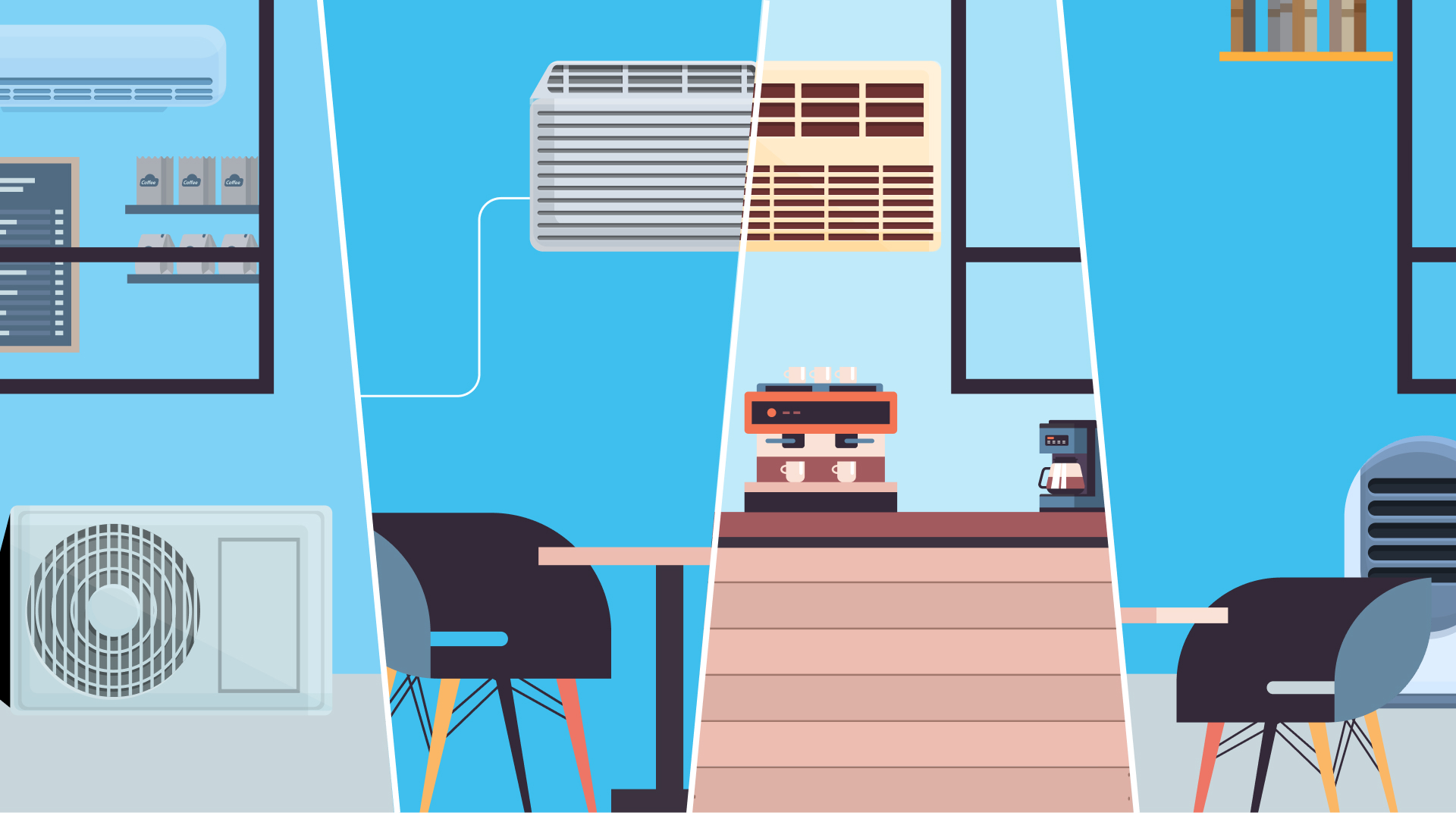
Step 1: Understand Your Restaurant's Size and Layout
To begin with, closely evaluate the size and layout of your restaurant. The total area, including the dining space and kitchen, will significantly influence the kind of HVAC system you should opt for. Moreover, architectural elements like multi-level dining areas, high ceilings, or large windows, can alter HVAC needs. Hence, a well-thought-out plan, considering all these aspects, is necessary.
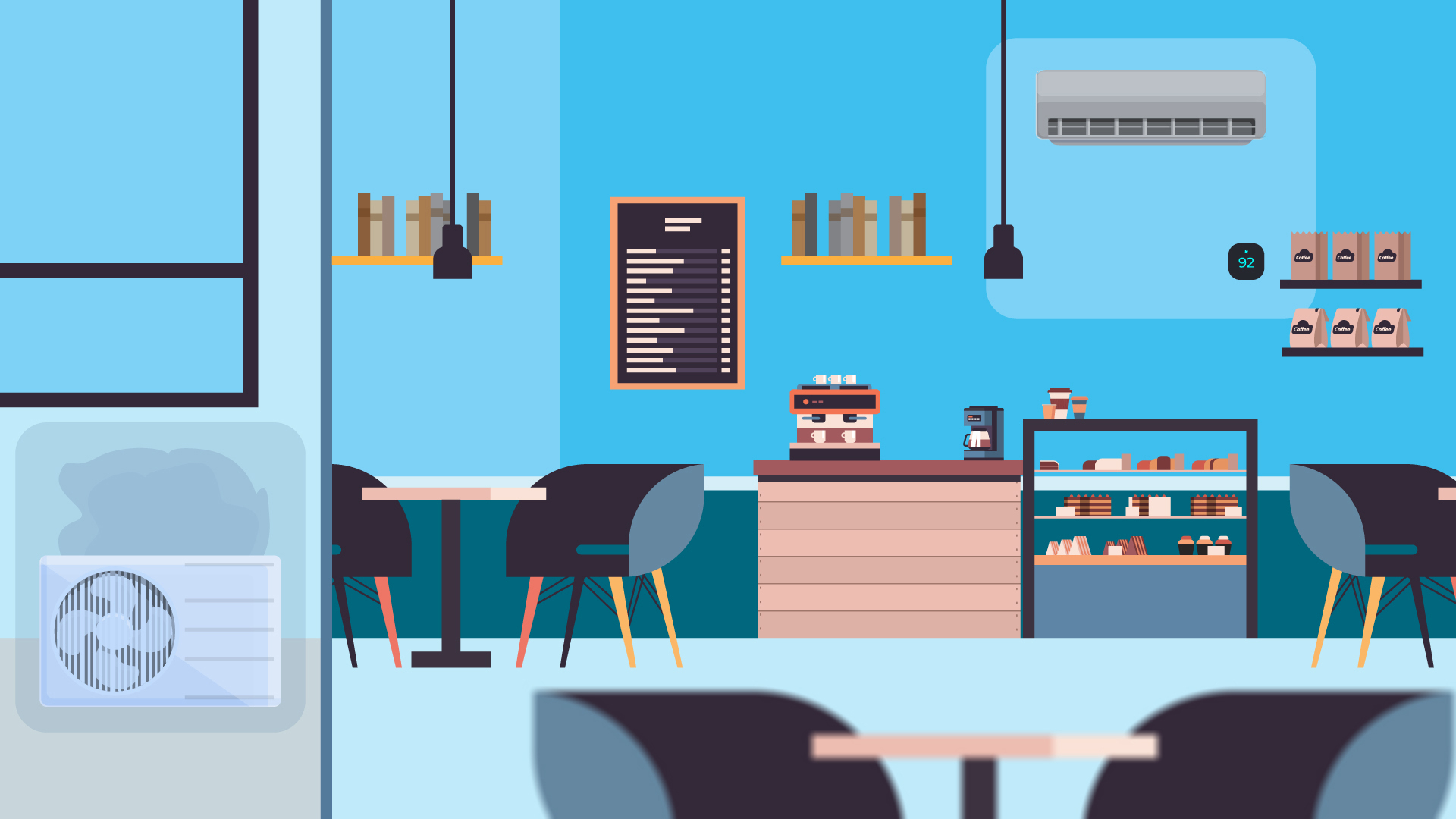
Step 2: Gauge the Capacity Needs
Next, shift your focus towards understanding the capacity needs of your HVAC system. Keep in mind that a packed restaurant during peak hours will generate more heat, with customers and bustling kitchen activities contributing to it. Your HVAC system should be robust enough to manage these fluctuations, maintaining a comfortable atmosphere throughout.
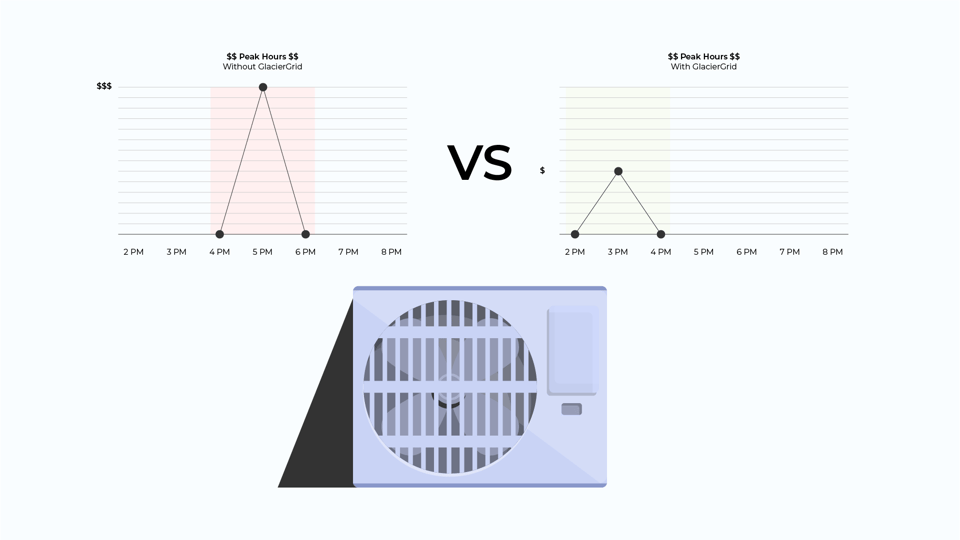
Step 3: Check the special features and adjustments
While considering the fundamental aspects, pay attention to the importance of special features and adjustments in the HVAC system. Opt for a system that can adapt in real-time to various factors like room occupancy and unexpected weather changes, which guarantees both energy efficiency and guest comfort.
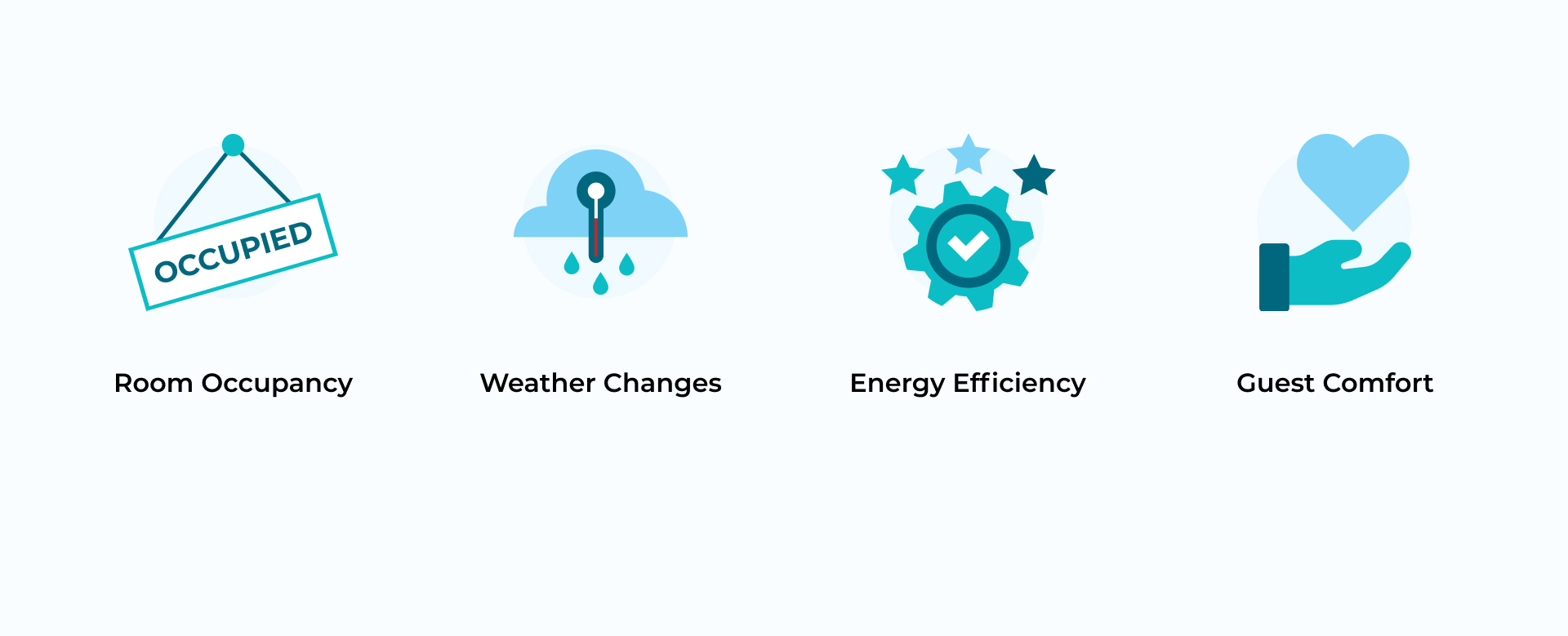
In conclusion, selecting the right HVAC system is an art that marries science and anticipation of real-world scenarios. By paying attention to the unique characteristics of your restaurant and choosing an HVAC system that aligns with these, you pave the way for a dining experience that's comfortable, enjoyable, and memorable for your guests.
3 Factors to Consider When Choosing an HVAC Unit
Here are the top 3 crucial technical factors that business owners should consider when it comes to energy efficiency ratings and cost savings in the context of selecting an HVAC unit:
1. SEER Rating (Seasonal Energy Efficiency Ratio):
What is it? The SEER rating is a measure of the energy efficiency of an HVAC system over an entire cooling season. It is calculated as the ratio of the total cooling output (in BTUs) to the total electric energy input (in watt-hours) over the same period. A higher SEER rating indicates a more energy-efficient system.
Why is it important? Choosing a system with a high SEER rating ensures that the unit operates at maximum efficiency, which not only conserves energy but significantly lowers utility bills, making it a cost-effective choice in the long run.
2. Modulating or Variable-Speed Technologies:
Why is it important? These technologies enhance energy efficiency as they allow the unit to use only the amount of energy necessary to maintain the desired temperature, avoiding wasteful energy use and thus saving on operational costs.
3. AFUE Rating (Annual Fuel Utilization Efficiency) for Heating Systems:
What is it? AFUE is a standard efficiency metric used to evaluate the efficiency of heating systems, including furnaces and boilers. It represents the percentage of fuel energy that is converted into usable heat over a year. A higher AFUE percentage indicates a more efficient system.
Why is it important? By selecting a heating system with a high AFUE rating, businesses can ensure that they are getting the most heat output for their energy input, which translates to lower heating costs and a reduced carbon footprint.
When choosing an HVAC unit, understanding and considering these technical factors can help business owners select a system that not only meets their heating and cooling needs but also promotes energy efficiency and cost savings.
HVAC Readiness: The Importance of Preventive Maintenance
Importance of Regular Inspections and Tune-Ups
Leveraging regular HVAC inspections not only uncovers latent inefficiencies but can also prolong your system's lifespan, culminating in cost savings from deferred replacements and optimized energy consumption.
For restaurant owners, a consistently calibrated HVAC ensures customers always experience a stable, inviting atmosphere.
Utilizing an hourly, daily, weekly, and monthly routine maintenance strategy can be a game-changer for your restaurant business. By leveraging real-time performance metrics and predictive analytics, you empower yourself to undertake proactive maintenance initiatives that are precisely aligned with your system's actual behavior patterns.
This not only signifies a smart investment but is a decisive step towards cementing your establishment's status as a preferred dining locale. This approach allows you to anticipate potential issues before they escalate, guaranteeing a seamless dining experience and fostering a reputation for excellence and reliability in your community.
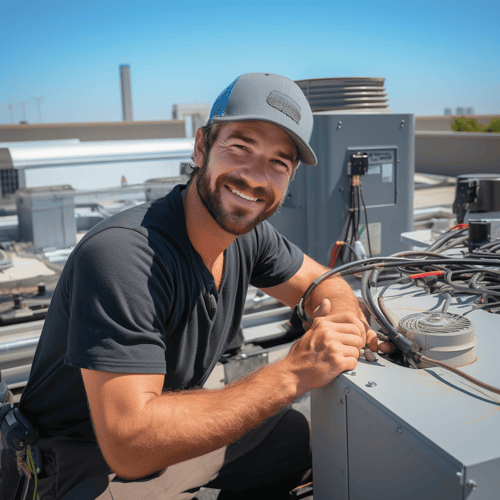
Optimizing Your Restaurants’ Cooling and Ventilation
Zoning: Tailoring Temperature Control to Different Areas
In restaurant design, zoning is a strategic partitioning of spaces, each with tailored temperature settings, optimizing for that area's specific activities and preferences.
This distinction ensures pleasant warmth in dining zones while maintaining a cooler ambiance in busy kitchen regions. Equally, it allows for nuanced temperature controls between outdoor al fresco spaces and indoor sections, prioritizing effective cooling or ventilation as needed.
For intermittently used private dining rooms, zoning offers the advantage of activating heating or cooling only upon occupation, leading to energy savings.
By adopting such a system, restaurant owners can significantly cut down on energy expenditures and amplify the overall dining experience for patrons, ensuring each area meets its unique climatic requirements.
Smart Thermostats and Automated Settings
In the contemporary digital age, intelligent thermostats have revolutionized restaurant operations, offering more than mere temperature adjustments. With capabilities like remote modifications via smartphones, historical data-driven automatic calibrations, and integration with security and lighting systems, these devices are at the forefront of operational efficiency.
For restaurateurs, this not only ensures a consistently comfortable ambiance for patrons but also optimizes energy usage and minimizes manual interventions, allowing staff to focus on enhancing the dining experience. To maximize benefits, restaurant owners should explore thermostats that best align with their daily patterns and integrate seamlessly with other existing systems.
Optimizing Air Quality and Energy Efficiency: Your Guide to Thriving During the Peak Season
Creating an inviting and ambient restaurant experience extends beyond just pleasing aesthetics; it fundamentally hinges on the harmonious balance between **indoor and outdoor air quality**.
This pivotal equilibrium lays the groundwork for an environment that manages odors effectively, regulates humidity, and meets the highest health standards.
Here’s how restaurateurs can enhance the customer experience and streamline operations:
Advanced Automated Air Exchange Systems: These systems are key players in establishing a fine balance that intricately combines comfort and safety, taking the dining experience up a notch.
Energy-Efficient Natural Ventilation: Leveraging these technologies goes beyond just cooling; they act as indispensable tools that foster a safe and comfortable dining atmosphere, simultaneously driving operational efficiency.
As we steer into the bustling peak season in the restaurant industry, it's crucial to focus on three main areas:
- Mastering Crowd Management and Indoor Environmental Quality: The current wave of technological advancements offers a treasure trove of tools that can elevate the dining ambiance while ensuring health, safety, and eco-friendly operations.
- Optimizing Air Quality with Existing Technologies: Employ systems that purify and enhance indoor air, reducing potential health risks and improving comfort levels for patrons.
- Energy Recovery Ventilation: Implement this technology to facilitate efficient energy use. It works by recycling otherwise wasted energy during the ventilation process, promoting a sustainable dining atmosphere, and reducing costs.
By integrating these advanced solutions, restaurant owners can navigate through the peak season with finesse, guaranteeing an exceptional and memorable dining experience for their customers.
Effective Ventilation for Improved Air Quality
What is air quality?
Air quality, at its essence, is a narrative of the invisible elements that breathe life into our spaces, shaping the stories diners carry away from their culinary adventures.
It quantifies the concentration of pollutants like carbon dioxide, volatile organic compounds, and particulates, metrics that determine an establishment's healthfulness and subtly influence diners' perceptions and experiences.
Poor air quality can not only jeopardize the health of patrons and staff, leading to symptoms like headaches and fatigue but can also subtly taint the overall dining experience.
In contrast, pristine air quality, achieved through meticulous monitoring and proactive measures, can elevate a restaurant's ambiance, rendering every bite fresher and every moment more enjoyable.
For restaurateurs, an investment in air quality isn't just about compliance; it's about crafting an environment where every inhale is a testament to their commitment to excellence.
Role of Ventilation in Removing Odors and Contaminants
In the sophisticated dining world, beyond aesthetics and acoustics, optimal ventilation stands paramount. For a restaurateur, ensuring an efficient airflow system isn't just about temperature control; it's a nuanced art of preserving the integrity of each dish's aroma, minimizing unwanted scents from past meals or cleaning agents, and fortifying the indoor space against potential airborne pathogens.
As the focus on indoor air quality intensifies globally, savvy restaurant owners should prioritize their ventilation for safety and offer patrons an experience akin to a restaurant's grand opening every single time. Investing in high-quality ventilation can translate to an unparalleled dining atmosphere, safeguarding reputation and health.
Strategies for Enhancing Air Circulation
In the ever-evolving culinary world, where every element of the dining experience is meticulously curated, air circulation remains a pivotal yet often overlooked cornerstone. A seasoned restaurateur knows that stagnancy is a foe not just on the menu but in the air guests breathe.
A harmonious balance of comfort and air purity can be achieved by combining advanced HVAC systems, integrating strategic placement of ceiling fans, and considering the occasional use of window or door openings to create cross-ventilation.
For the discerning restaurant owner, optimizing airflow isn't merely a technical endeavor; it's a dance of engineering and ambiance, a subtle choreography that enriches the dining atmosphere, enhancing customer satisfaction and promoting health simultaneously.
To orchestrate an impeccable dining ambiance, restaurant owners must recognize the nuanced dance of air circulation as a cornerstone of the experience.
- Diligent maintenance of ventilation units – ensuring unblocked vents, pristine filters, and smoothly operating fans – is paramount.
- Harnessing the dual benefits of optimized ductwork design for uniform air distribution and leveraging variable-speed fans can conserve energy while maintaining ideal circulation.
- Moreover, integrating plants enhances aesthetics and aids in contaminant absorption, and a hybrid ventilation system, marrying mechanical prowess during bustling kitchen hours with natural influx during calmer periods, can yield optimal results.
For a truly memorable dining moment, restaurateurs should prioritize air quality on par with culinary excellence.
Maximizing Energy Efficiency During Peak Seasons
Tips for Smart Energy Consumption
GlacierGrid doesn't just provide data; it offers insights. By understanding these insights, restaurants can craft an intelligent energy consumption strategy.
- Monitor in Real-time: With GlacierGrid Energy, get real-time updates on energy usage. Based on current needs, this enables immediate adjustments, be it turning down the heat or ramping up the cooling.
- Predictive Analysis: Using historical data, GlacierGrid can predict energy demands for upcoming peak times, allowing for proactive adjustments.
- Integrate with Other Systems: Use GlacierGrid Energy in conjunction with other systems. For instance, if the restaurant's occupancy sensors indicate fewer patrons, the HVAC can be adjusted accordingly.
- Training Staff: Ensure that the staff is aware of energy consumption goals and is trained to use systems like GlacierGrid Energy effectively. This could mean turning off equipment when not in use or optimizing settings during off-peak hours.
Innovative Technologies for Energy Efficiency
In today's era of gastronomic wonders, a behind-the-scenes revolution is sweeping the culinary world: the surge in energy-efficient technologies.
For the astute restaurant owner, integrating state-of-the-art solutions such as the GlacierGrid energy management system (EMS) isn't just about reducing overheads; it's about weaving a narrative of sustainability and advanced functionality into the very fabric of their establishment.
Harnessing energy-efficient technologies curtails operational costs and signifies a commitment to a greener footprint. As the hospitality industry races towards a more eco-conscious future, proprietors stand to benefit by adopting solutions like GlacierGrid, which not only optimizes energy usage but elevates the diner's experience to a realm where fine dining meets ecological mindfulness. The narrative becomes about exquisite meals and dining with a purpose.
To learn more about Energy Management systems, take a look at this article: What is a restaurant energy management system, and do I need one?
Reducing Operating Costs While Maintaining Comfort
Amidst the bustling peak season, the savvy restaurant owner knows that exceptional dining isn't just about the plate but also about the ambient perfection of the establishment. Preparedness isn't just about a full pantry; it's a dance of utilizing tools like GlacierGrid to schedule HVAC operations, aligning with rush hours, and conserving during quiet moments. But the melody doesn't end there.
The essence lies in the regular heartbeats of maintenance, the vigilance against the sly leaks from doors and windows, and the foresight to see when an upgrade isn't just a cost but an investment.
The story isn't one of mere energy conservation but of a harmonious blend of comfort, efficiency, and profitability, all choreographed to the rhythm of intelligent decisions.
Preventing Tracking Temperature and Humidity
In the intricate ballet of restaurant operations, monitoring temperature and humidity is akin to a maestro's perfect note. Both elements are silent influencers, impacting everything from food quality to customer comfort.
For the discerning restaurant owner, investing in advanced hygrothermographs isn't a mere technical addition but a testament to a commitment to delivering a flawless experience.
By maintaining optimal temperature and humidity levels, restaurateurs ensure food's freshness and safety and influence the ambiance – preventing dampness that can make patrons uncomfortable or excessive dryness that may affect wooden decor and fixtures. In essence, continuously tracking these elements creates an environment where the cuisine and the customer thrive.
The Human Touch: The Role of Staff Training and Customer Education
Educating Customers About Energy Conservation Efforts
Restaurants can enhance their patrons' experience by spotlighting their environmental efforts:
- integrate a section in the menu or a website page detailing green initiatives;
- actively engage on social media with updates and behind-the-scenes glimpses;
- host unique events like Earth Hour dinners or sustainability workshops to paint a vivid picture of the restaurant's commitment;
- get valuable insights by creating channels for customer feedback.
Empowering Staff to Monitor and Adjust Systems
In a bustling restaurant, where energy consumption can dramatically influence operational costs, empowering staff with regular training on updated ventilation and energy systems is paramount.
They become proactive stewards of energy by equipping them with the know-how to make on-the-spot adjustments to temperature or equipment settings.
Moreover, fostering a culture where they can voice observations or suggest modifications ensures the establishment runs efficiently. For restaurateurs, introducing incentive programs further bolsters this energy-conscious mindset, turning every team member into a vigilant custodian of energy savings, ultimately benefitting the establishment's bottom line.
Emphasizing the Benefits of Optimal Cooling and Ventilation
While the immediate benefit of a well-cooled and ventilated space is the comfort of patrons, the ripple effects go far beyond.
- Customer Retention & Word of Mouth: A comfortable dining environment ensures repeat customers and positive word-of-mouth recommendations, driving business growth.
- Operational Efficiency & Cost Savings: Properly maintained and optimized systems result in significant energy savings, reflecting positively on the bottom line.
- Positive Brand Image: Demonstrating commitment to sustainable practices and optimal indoor environments can significantly enhance a restaurant's reputation.
- Enhanced Staff Productivity: A comfortable working environment boosts staff morale and productivity, leading to better service and overall patron experience.
In conclusion, the success of a restaurant in peak seasons doesn't lie merely in its menu. It's in the holistic experience offered where the ambiance plays a pivotal role. Investing time, effort, and resources into understanding and optimizing cooling, heating, and ventilation systems can set a restaurant on the path to consistent success, ensuring happy patrons, motivated staff, and a thriving business. As we've journeyed through these pages, the underlying message is clear: Be prepared, be proactive, and prioritize the comfort and well-being of everyone who walks through the restaurant's doors.








